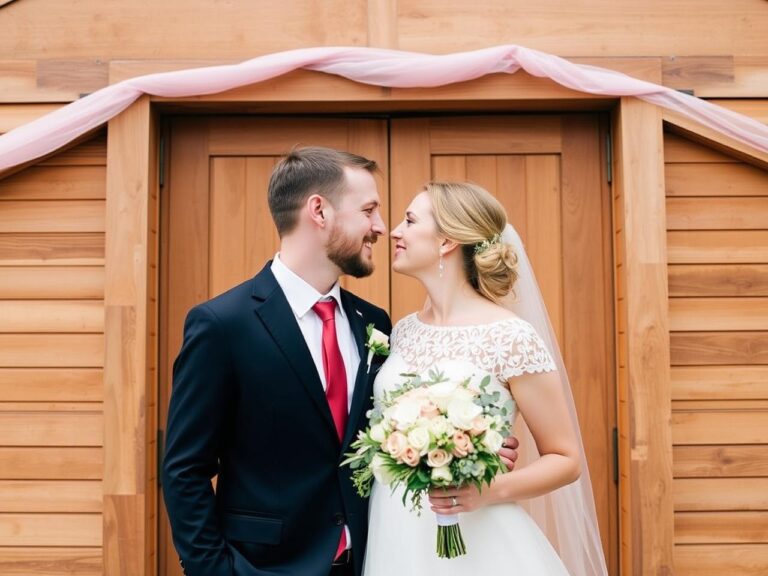How to Hold a Serious Face While Your Brain Is in Full Panic Mode
Panic and anxiety are common experiences in modern society, often resulting from various stressors such as work pressures, personal relationships, and daily responsibilities. These emotional states can manifest through physical symptoms like increased heart rate and perspiration, as well as psychological sensations of fear or dread. Recognizing the prevalence and impact of panic and anxiety is essential for developing effective coping strategies.
Multiple factors can trigger panic and anxiety, including chronic stress, uncertainty, and past trauma. These reactions are natural physiological responses to perceived threats. However, it is important to note that prolonged or excessive panic and anxiety can negatively affect both mental and physical health.
Understanding the challenges associated with managing these emotions is a crucial step in identifying and implementing appropriate techniques to address panic and anxiety effectively.
Key Takeaways
- Understanding the challenge of concealing panic is the first step to mastering the art of maintaining a poker face in stressful situations.
- Deep breathing and mindful meditation can be powerful tools in regaining control and composure during moments of panic.
- Humor can be used as a distraction technique to shift focus away from panic-inducing thoughts and situations.
- Embracing the “fake it till you make it” mentality can help in projecting confidence and calmness, even when feeling panicked inside.
- Finding your inner zen in the midst of chaos is essential for maintaining a sense of peace and control in challenging situations.
Mastering the Art of Concealing Panic with a Poker Face

Mastering the Art of Concealment
One effective way to deal with panic and anxiety is by mastering the art of concealing it with a poker face. This doesn’t mean suppressing or denying our emotions, but rather learning how to maintain a calm and composed exterior, even when we’re feeling anything but on the inside. By practicing this skill, we can prevent others from picking up on our feelings of panic, which can in turn help us feel more in control of the situation.
Techniques for Concealing Panic
Mastering the art of concealing panic with a poker face involves maintaining steady eye contact, controlling our facial expressions, and regulating our body language. It’s about projecting an air of confidence and composure, even when we may be feeling anything but. By doing so, we can avoid drawing unwanted attention to ourselves and prevent others from becoming alarmed by our state of mind.
Professional Benefits
This can be particularly useful in professional settings, where maintaining a sense of professionalism and authority is crucial.
The Power of Deep Breathing and Mindful Meditation

Deep breathing and mindful meditation are powerful tools for managing panic and anxiety. When we experience moments of panic, our breathing tends to become shallow and rapid, which only serves to exacerbate our feelings of distress. By practicing deep breathing techniques, we can slow down our heart rate, calm our nervous system, and bring our focus back to the present moment.
This can help us regain a sense of control and clarity in the midst of chaos. Mindful meditation involves focusing on the present moment without judgment, allowing us to observe our thoughts and feelings without becoming overwhelmed by them. By practicing mindfulness, we can learn to detach from our racing thoughts and emotions, creating a sense of distance that can help us gain perspective on the situation at hand.
This can be particularly beneficial in moments of panic, as it allows us to step back from the intensity of our emotions and approach the situation with a clearer mind.
Using Humor as a Distraction Technique
Humor can be a powerful distraction technique for managing panic and anxiety. Laughter has been shown to reduce stress hormones and increase feel-good endorphins, making it an effective way to shift our focus away from feelings of panic. By finding humor in the situation or using lighthearted jokes to diffuse tension, we can create a mental shift that helps us break free from the grip of anxiety.
Using humor as a distraction technique involves finding ways to inject levity into the moment, whether it’s through witty remarks, funny anecdotes, or playful banter. By doing so, we can create a sense of lightness that can help us feel less weighed down by our emotions. This can also have a contagious effect on those around us, helping to diffuse tension and create a more relaxed atmosphere.
By using humor as a distraction technique, we can disrupt the cycle of panic and anxiety and create space for more positive emotions to emerge.
Embracing the “Fake it Till You Make it” Mentality
Embracing the “fake it till you make it” mentality can be a powerful way to overcome moments of panic and anxiety. This approach involves projecting confidence and composure, even when we may not feel it internally. By adopting this mindset, we can create a self-fulfilling prophecy that helps us embody the qualities we aspire to have, ultimately leading to a shift in our internal state.
Embracing the “fake it till you make it” mentality involves adopting confident body language, using positive affirmations, and visualizing success in the face of adversity. By doing so, we can reprogram our mindset and create a sense of empowerment that can help us navigate through moments of panic with greater ease. This approach is not about denying our feelings or pretending that everything is okay, but rather about taking proactive steps to shift our internal state towards one of confidence and resilience.
Finding Your Inner Zen in the Midst of Chaos

Cultivating Inner Peace through Self-Care
Finding your inner zen involves practicing self-care activities such as yoga, meditation, or spending time in nature. It’s about creating moments of stillness and quiet reflection that allow us to reconnect with ourselves on a deeper level. By doing so, we can cultivate a sense of inner peace that acts as a buffer against the chaos of the outside world.
Creating Balance and Harmony
Finding your inner zen is not about escaping from reality, but rather about creating a sense of balance and harmony that can help us navigate through moments of panic with greater ease.
The Power of Inner Zen
By finding our inner zen, we can create a sanctuary within ourselves that serves as a source of strength and resilience in times of distress. This sense of inner peace can help us remain grounded and centered, even when everything around us feels overwhelming.
Laughing at Yourself: The Ultimate Antidote to Panic
Laughing at yourself can be the ultimate antidote to panic and anxiety. By finding humor in our own imperfections and embracing our vulnerabilities, we can create a sense of lightness that helps us break free from the grip of fear. This approach involves adopting a lighthearted attitude towards ourselves and learning to not take things too seriously.
Laughing at yourself involves being able to see the humor in your own mistakes and quirks, rather than becoming overly critical or self-conscious. By doing so, we can create a sense of self-acceptance that allows us to let go of perfectionism and embrace our humanity. This can be particularly powerful in moments of panic, as it helps us shift our perspective from one of fear to one of acceptance and self-love.
By laughing at yourself, you can create a mental shift that helps you break free from the grip of anxiety and approach life with greater ease and joy. In conclusion, managing moments of panic and anxiety is a universal challenge that many of us face in today’s fast-paced world. By understanding the nature of these emotions and exploring effective coping mechanisms, we can learn to navigate through moments of distress with greater ease and resilience.
Whether it’s through mastering the art of concealing panic with a poker face, practicing deep breathing and mindful meditation, using humor as a distraction technique, embracing the “fake it till you make it” mentality, finding your inner zen in the midst of chaos, or laughing at yourself, there are numerous strategies that can help us overcome moments of panic and anxiety. By incorporating these techniques into our daily lives, we can cultivate a sense of inner peace and strength that allows us to approach life with greater confidence and resilience.
FAQs
What is a serious face?
A serious face is a facial expression that conveys a sense of gravity, solemnity, or importance. It typically involves a neutral or slightly furrowed brow, a closed or slightly parted mouth, and minimal movement of the facial muscles.
What does it mean to be in full panic mode?
Being in full panic mode refers to experiencing intense feelings of fear, anxiety, or distress, often accompanied by physical symptoms such as rapid heartbeat, sweating, and difficulty breathing. It can be a response to a perceived threat or danger.
How can one hold a serious face while experiencing panic?
To hold a serious face while experiencing panic, it can be helpful to practice deep breathing and mindfulness techniques to calm the body’s physical response to panic. Additionally, focusing on a specific point or object in the environment can help maintain a neutral facial expression.
Why might someone need to hold a serious face while in panic mode?
There are various reasons why someone might need to maintain a serious face while experiencing panic, such as during a public speaking engagement, a professional presentation, or a high-stakes situation where conveying composure and control is important.
Are there any potential drawbacks to holding a serious face while in panic mode?
While holding a serious face during panic can help convey a sense of composure, it’s important to acknowledge and address the underlying feelings of panic to prevent long-term negative effects on mental and emotional well-being. It’s essential to seek support and coping strategies for managing panic and anxiety.






